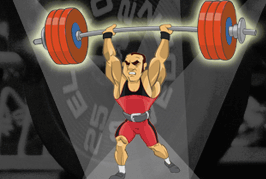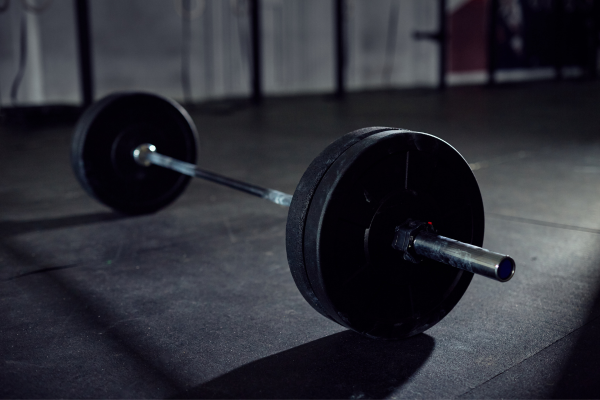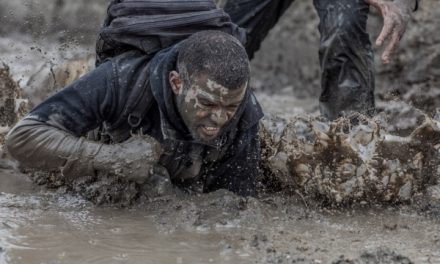If you’re an athlete, you need to be explosive… unless of course you’re a marathon runner, in which case you can just slowly jog away from this article right now because this doesn’t apply to you.
But if you’re involved in any other sport that is worth watching, like MMA, football, basketball, hockey, soccer, etc, then explosive power is what makes those exciting plays happen.
You know, when someone lands a big knockout punch or takedown, a running back breaks through the middle of the line, or Blake Griffin soars through the air and throws down a big dunk.
Well there’s no better way than adding in the Olympic lifts.
In fact, science has proven it.
In a study published in the Journal of Strength and Conditioning Research in 1993 called “A Review of Power Output Studies of Olympic and Powerlifting: Methodology, Performance Prediction, and Evaluation Tests”, author John Garhammer performed a biomechanical analysis of the Snatch, Clean and Jerk, Deadlift, Squat and Bench Press to determine how much power was being generated during each exercise.
Before we get into the results of the study, you must understand how power is calculated.
Power is calculated by the following equation (it’s math lesson time – yay!):
Power = Force x Velocity
While velocity is simply how fast you move the weight, Force = Mass x Acceleration, how much weight you move multiplied by how much you accelerate the weight.
That’s why with respect to power output, lifting heavier doesn’t always mean lifting more powerfully, because whenever you add weight, you will be slowing down the lift.
Now let’s take a look at the results of Garhammer’s study…
Garhammer analyzed video of elite lifters and calculated their power outputs through some really intense mathematical analysis.
If you’re a science geek who wants to see the details, click here to download the entire study.
Basically, what Garhammer found was that during the Clean exercise, a 100 kg lifter generated 4191 watts of power, while during the Deadlift, 1274 watts of power were generated!
The reason why over 3x more power is generated by the Clean is because the lift is performed so much faster and over a much bigger range of motion – it takes about 1 second to get the barbell from the floor to the front rack position during a heavy Clean, while it can take anywhere from 4-6 seconds to get the barbell from the floor to the thighs in a Deadlift.
Plus, because you cannot perform the Olympic lifts slowly, you’re forced to be explosive!
Just check out this video of Chinese lifter Liao Hui, lifting 198 kg (435 lbs) in the Clean and Jerk… at a bodyweight of only 69 kg (151 lbs)!
So if you’re looking to improve your explosive power for your sport, jump higher, or just learn these highly technical exercises because you’ll get a kick out of seeing the looks on people’s faces as you do these in the gym while they’re sitting on the leg extension, check out my friend Eric Wong’s (trains UFC fighters) Olympic Lifting Mastery Course to learn more about the Olympic lifts and becoming a more explosive athlete or powerful lifter.
 Who Else Wants To Quickly Master The Most
Who Else Wants To Quickly Master The Most
Explosive Exercises On The Planet?
Click Here







What a motivating article, Mike!
I use squats, dead lifts and the bench press as part of my regular training routine, but have never really put an emphasis on the snatch or clean and jerk lifts.
Actually, I train in my basement that has 7′ ceilings, so I am not sure how I would be able to integrate these lifts with my current setup. Either way, you have given me some good reasons to think about adding these lifts into my training regimen – if I can only find a way to make it work…
On a side note, are you planning on attending The Arnold Sports Festival this weekend? I am thinking about driving up for a day or two, but haven’t decided for sure yet.
Ya ceiling can get in the way. I won’t be at the Arnold, but look for Ben Tatar. He’ll be wearing a critical bench shirt and covering the event. Have fun if you go.
If I ordered one of these books is there anyway I can get it through the mail. Thank You.
It depends on the book Kevin. If you’re talking about Eric’s Olympic Lifts Mastery Course I do believe it’s only offered in digital format.
Great article Mike. I was neglecting the clean for quite some time. I gotta tell ya, my training partners have certainly noticed a difference on the mat. Somebody makes a comment about my core strength each and every day now. This didn’t start happening until i really started utilizing Olympic lifts in my training back in Jan. Thanks again for posting.
That was friggin unreal!!!!!